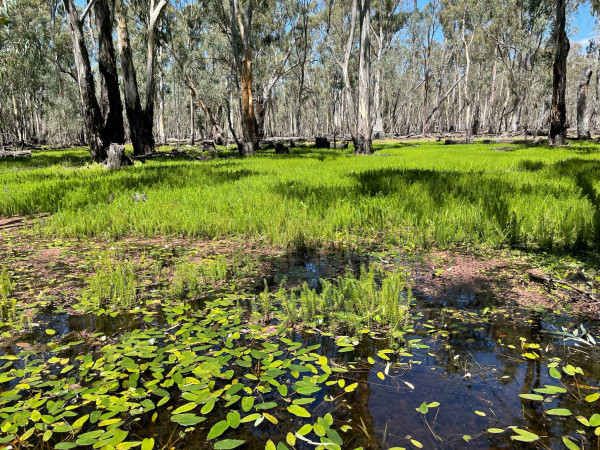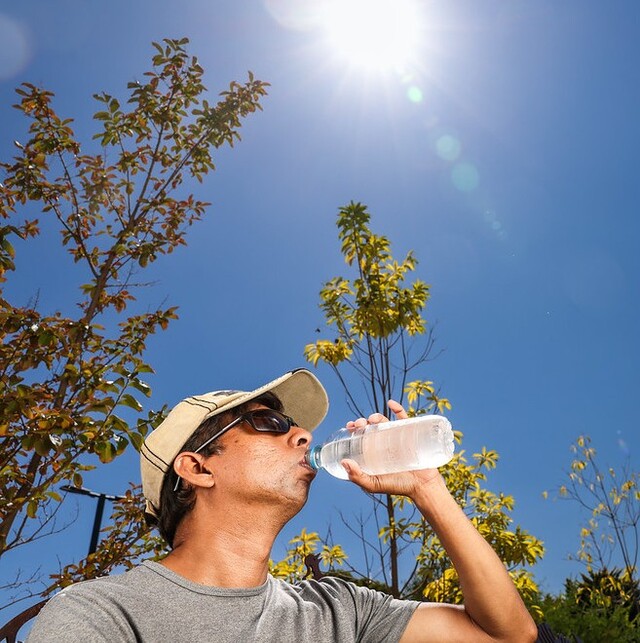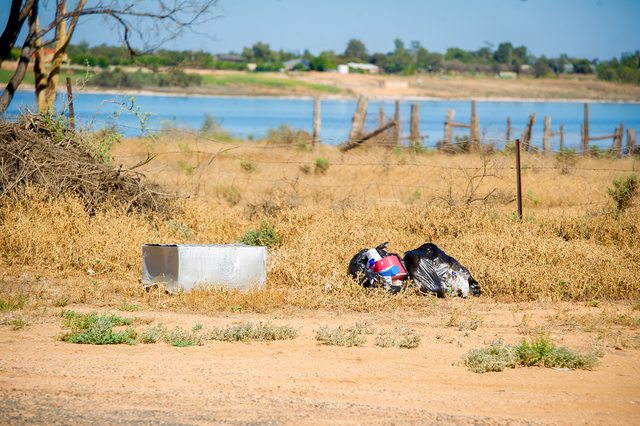THE second stage of the 2022 Gunbower Forest floodplain watering is on track to begin in the last 10 days of June, with the opening of the Hipwell Road regulator and channel.
The structure allows water to flow onto the floodplain from Gunbower Creek, connecting to Spur Creek and following natural flow paths through the forest.
This will allow the water for environment footprint – about 4,500 hectares (23 per cent of the floodplain) – to receive a much-needed drink from now until the end of spring.
North Central Catchment Management Authority (CMA) chief executive Brad Drust said the water delivered from the Hipwell Road channel would reach areas that hadn’t received a drink for four years.
“This flow builds on the wetland fills of last year, and gets water where it is desperately needed,” he said.
“The Gunbower floodplain ecosystem is struggling under the impacts of a changing climate. Water for the environment is doing its bit to help the floodplain survive in between large floods.
“Environmental flows help build resilience in Gunbower Forest, in the floodplain’s trees and aquatic plants, enabling them to complete their lifecycles in the face of a variable climate.”
Mr Drust said the flow will support the health of key areas of the forest with important stands of red gums and aquatic understorey to get a drink.
“The diversity of the aquatic understorey seedbank that Gunbower is well-known for across the Murray Darling Basin is still present on the floodplain, but it needs a flood to stimulate germination,” he said.
“This flow also aims to increase areas of healthy wetlands and will provide suitable feeding, breeding and refuge habitat for waterbirds, small-bodied native fish, frogs, turtles, and other water-dependent fauna.”
Victorian Environmental Water Holder co-chief executive Dr Sarina Loo said there is the intention the water would flow until late spring.
“Water on the floodplain in winter and spring aligns with the conditions these floodplains evolved in,” Dr Loo said.
“A long duration is important because it means there is a large inundated area for birds to forage in for a longer period and it gives the base of the food web (including bugs, yabbies and fish) time to breed up and build their numbers,” she said.
“In turn this provides food for waterbirds which need to fatten up and build their energy stores before breeding.
“Inundating the floodplain early in the season means plants have the opportunity to germinate and establish early, too, giving them a better chance of fulfilling their life cycles before temperatures rise later in spring and summer.”







